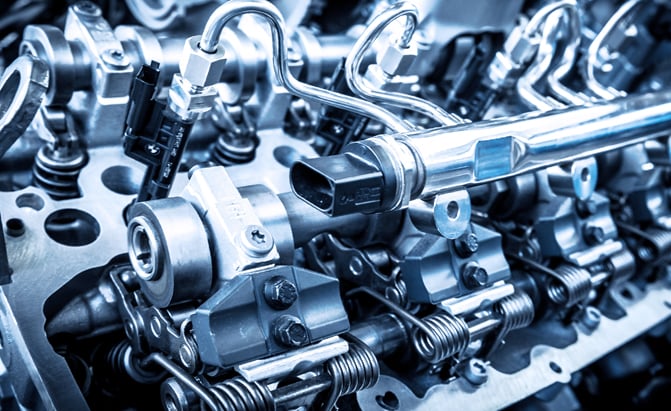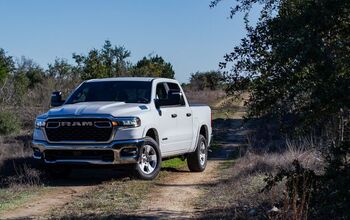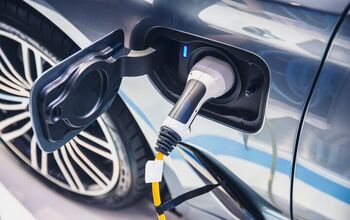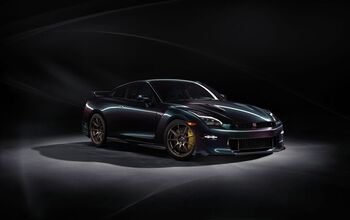How to Increase Horsepower: 10 Easy Ways
More power. It’s what almost every owner wants from their car, truck, or SUV, but the question is how do you get it? There are loads of ways to add power to your vehicle, from cheap and easy to involved and expensive. We’re here to help you with the basics, bringing you 10 easy ways to increase your vehicle’s horsepower. And when it comes to working on your vehicles, eBay Motors is an excellent source for parts, accessories and all the necessary tools for the job.
Start with the basics. An engine is an air pump that adds fuel to make an explosion, and the result of that explosion is horsepower and torque. To add power, you need to burn more fuel. To burn more fuel, you need more air.
Lead image by by Vixit/Shutterstock.com
Table of contents
Performance Air Intake
The best way to get more air is from your vehicle's air intake. A modern car or truck has a very efficient air intake, but it is still full of compromises that make every vehicle better suited for the average buyer. A high-performance intake, also called a cold air intake, helps flow more air in two main ways.
The first is that it has less restriction than a factory intake. Stock intakes are designed to be quiet as well as to work efficiently. An aftermarket performance intake drops the baffles and channels and lets the air flow directly into your throttle body. That can mean more power, and it can mean a more powerful sound.
A cold air intake also has its opening in a part of the engine bay chosen to get more air directly from outside; that's the second way to add more oxygen. Colder air has more oxygen than the hot air in your engine bay, and more oxygen means you can burn more fuel. More fuel means more power.
High Flow Air Filter
It won't make a large difference by itself, but in combination with a performance intake, a high-flow air filter can help your engine move more air and make more power. These filters offer less restriction than the factory filter, and many of them give you a larger surface area. That means that more air can be pulled through into the engine, and the engine doesn't have to work as hard to do it. That makes your engine more efficient, lets it burn more fuel, and makes it more powerful, which is exactly what you're looking for. While a performance filter in the stock airbox can make a difference, you'll really feel it once you open the engine's breathing with an intake and exhaust.
Cat-Back Exhaust
After you replace your intake, you need to get that air out of the engine. You do that with a high-performance cat-back exhaust system. A performance exhaust uses larger diameter pipes than the factory exhaust so that they can flow more exhaust. They use smoother bends called mandrel bends that reduce restrictions that slow exhaust flow. They increase how fast the exhaust flows, sucking the exhaust out of your engine. Less restrictive mufflers also help move more air out, letting you pull more air in through your intake. A cat-back exhaust attaches after your catalytic converter, saving you from replacing that expensive and sensitive (and air-cleaning) factory part. A performance exhaust will make your car or truck louder, which might be a nice bonus.
Engine Computer Tuning
Your engine is almost completely controlled by a computer and that computer's program. Everything from how wide the throttle opens to when the fuel is injected, to even starting. Your vehicle leaves the factory tuned for the average driver and a very long (and boring) life.
Tuning your ECU, which means having the software modified by a company that knows what it is doing, is a cheap and easy way to add power. ECU or engine management tuning can adjust ignition timing including spark advance to make more power. It can also change how your variable valve timing comes into effect. With modern turbocharged cars, a tune can also increase your boost pressure. More boost packs more air and fuel into the engine with every revolution, which adds more power.
The factory ECU is meant for factory intake and exhaust (and everything else). If you've added a new intake and exhaust, or any other performance parts from this list, tuning your ECU lets your engine make the most of those changes to make more power and run its best.
An ECU tune on a modern vehicle is as easy to install as plugging in a computer cable. Most are tuned directly through the OBD-II port located under your steering wheel. You can change the air fuel ratio (or leave it to the pros), and some even let you customize other parts of your vehicle by adding or changing factory features.
Lightweight Wheels
It's not power at the crankshaft that matters when you nail the gas. It's also the power that makes it to the pavement. Engine power is used up by your transmission, driveshaft, and differential, and every part between your pistons and the pavement that spins. You can't make most of those parts more efficient, but you can install lightweight wheels to keep more of your power.
A wheel that's 1 lb lighter is just like taking 8 lbs of weight out of the car. Light wheels reduce vehicle mass which makes your car accelerate more quickly, which makes it feel more powerful. They also do make your vehicle more powerful by taking away less of the power that the engine makes. Spinning heavy wheels takes away power before your car ever moves.
A 200 hp car could put an extra 10 hp or more to the pavement just by using lightweight wheels compared with a heavier set. Lightweight wheels make your vehicle stop, ride, and handle better, too, while saving you on fuel and letting you use that money to make your ride even quicker.
High-Flow Throttle Body
Now that you've improved your engine's airflow and have tuned the computer to use that extra air. What's next? Things start to get a little more complicated, but a great next step is a high-performance and high-flow throttle body.
The throttle body is usually the bottleneck of your engine intake system. There can be a lot of restrictions because this is the part that regulates how much air flows into your engine. Replacing it with a high-flow part allows even more air from your performance intake to reach your engine's intake manifold. In addition, a larger diameter throttle body with a larger throttle plate flows more air and takes advantage of all the other changes you've made.
Why wouldn't you make this change first? Because you need to get more air to the throttle body and out the exhaust. Otherwise a larger part here will have no effect.
Performance Exhaust Manifold
On the opposite side of the engine from the throttle body is the exhaust manifold. The exhaust manifold is the part that moves the exhaust from the exit ports of the cylinder heads to your catalytic converter or to your exhaust system. This is where exhaust flow is joined from four tubes (in a V8 or four-cylinder engine) or three tubes (in a V6 or most I6 engines) to just one tube.
Factory parts here are designed to be cheap, quickly cast, and made to fit into a small space, and that leaves you with the need for high-performance exhaust manifolds. These manifolds, sometimes called headers, improve airflow out of your engine. Performance manifolds reduce what is called "back pressure", a force that stops the engine from pumping the exhaust out that costs you power. Performance headers instead speed up the flow of the exhaust which boosts power.
Performance manifolds are made either by hand, welding together a series of tubes and bends, or in a more complex and more expensive casting process. Because of their construction, these manifolds are much higher quality than stock. They also smooth the flow of the exhaust which helps boost power, and they can flow more air. That means, you guessed it, more power.
High Performance Turbocharger
If you've got a modern car, truck, or SUV, there's a good chance it already has a turbocharger fitted. These power-adders also help boost fuel economy, so nearly every automaker is using them. But you can make more power by fitting a larger turbocharger than the stock part.
If you don't have a factory turbo, we have even better news. A turbocharger kit is an excellent way to add power and performance to your vehicle and is more affordable than just about anything else that will make similar power figures.
Like we said, an engine is an air pump. A turbocharger is a second pump that uses your exhaust gasses to spin a fan. The spinning fan packs more air into your engine, and we call that boost. More boost means more air in your engine, so more fuel can burn, and you make more power. 14 lbs of boost has the same effect as turning a 2.0L engine into a 4.0L one, meaning you can double your horsepower or add even more.
A factory turbocharger is chosen to deliver quick response and high fuel economy. Adding a larger turbocharger, which means a larger diameter fan in the exhaust and in the intake, lets you force more air into the engine. More boost from the bigger turbo means more fuel and more power.
Fitting a turbocharger to an engine that doesn't already have one takes more work. It needs a new intake and exhaust, as well as pipes to flow the air, but it can easily double or triple the amount of horsepower an engine makes. It's hard to find a better bang for your buck than that, which is why turbocharger kits for models like the Subaru BRZ and Chevrolet Corvette are so popular.
Intercooler Upgrade
Part of compressing air inside a turbocharger means heating up the air. You squish the air, and it gets hot, hot air is less dense, which means less oxygen, and that means less fuel and horsepower. A device called an intercooler lets you keep your high-pressure air but gets rid of the heat for more oxygen in the cylinders.
It's like a radiator but instead of using air to keep the engine coolant cool, it uses outside air to keep the pressurized air from the turbocharger cool. It even looks like a smaller radiator. A larger intercooler, mounted in your front bumper, does a better cooling job than the stock part, especially if you have a larger turbo.
A big front-mount intercooler lets you make more boost and pack more air and fuel into each cylinder, and it lets your engine make more power safely, as heat is the enemy of power and reliability.
High Flow Fuel Injectors
If you've made all these changes to your engine, it's time for one last easy way to make more power. We keep talking about more fuel, and while your engine can handle enough of it, your stock injectors can't. You'll need larger fuel injectors that can flow more fuel.
As you get closer to the maximum capacity of stock injectors, they start to lose their precision and flow. Instead of a fine mist, they start just dumping gas into the engine, and that means less efficient combustion, poor performance, and lost power.
Properly sized fuel injectors will make sure that not only do you have enough fuel flow but that your engine is spraying that fuel at just the right time. That makes your engine more efficient and makes sure you can make the most of your extra air, giving you more horsepower when you need it. Stock injectors for a 300 hp V8 flow around 24 pounds of fuel every hour. Turn that into a 500 hp engine with that turbo kit and you'll need at least 46 lbs/hr, much more than the stock injectors are capable of.
Evan moved from engineering to automotive journalism 10 years ago (it turns out cars are more interesting than fibreglass pipes), but has been following the auto industry for his entire life. Evan is an award-winning automotive writer and photographer and is the current President of the Automobile Journalists Association of Canada. You'll find him behind his keyboard, behind the wheel, or complaining that tiny sports cars are too small for his XXXL frame.
More by Evan Williams









































Comments
Join the conversation
Using maruti A star 3 cylinder unit with automatic torque converter . I love this car due to its compact size . Problem is the shivering or vibration in car due to less power . How can I get rid of tractor type vibration. Please advice
Thanks for the advice